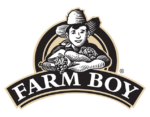At Farm Boy, we take pride in offering our customers deliciously unexpected fruits and veggies that you might not find elsewhere, sourced for the best quality and excellent value. In our stores, you’ll discover a vibrant array of exotic fruits and vegetables alongside your standard apples, potatoes, and lemons. While you might already be familiar with the likes of pineapple and kiwi, our stores are stocked with some lesser-known exotic produce. Think: jackfruit, soursop, and star apple! In the first of our series on exotic produce, we’re looking at delicious fruits and vegetables from the countries within the Caribbean. (Please note: While these items may be cultivated and imported from elsewhere, their origins are within the Caribbean.)
Discover all about some of these Caribbean produce items, including nutrition, how to choose, how to store, how to enjoy, and more! Please note: the availability of these items will depend on store and seasonality.
Caribbean Fruits

Baby Mango
Also Known As: Sugar Mango
Flavour: Intensely sweet and juicy.
Appearance: Roughly the size of a peach or apple, baby mangos range in colour from green to orange-red.
Nutrition: Rich in antioxidants and vitamins A and C.
At the Store: Look for a firm fruit that yields slightly to pressure, like a peach or nectarine.
How To Enjoy: As a snack, enjoy this Caribbean fruit with the skin on!
How To Store: Keep at room temperature until ripe, then place in the fridge.
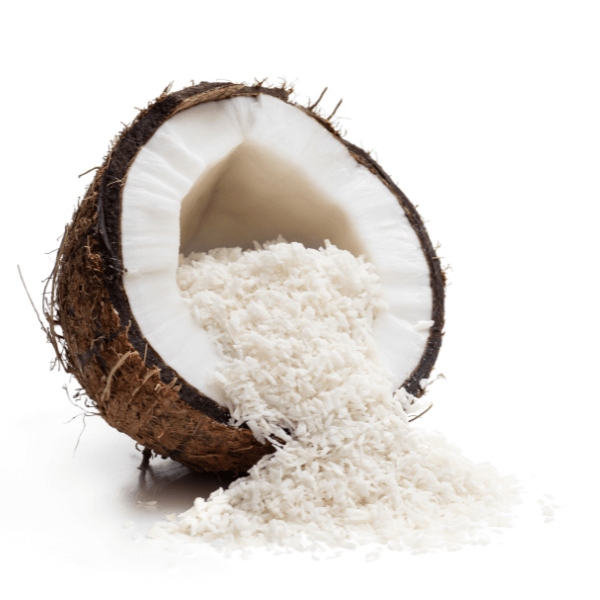
Coconut
Also Known As: N/A
Flavour: Creamy, nutty, and milky.
Appearance: Coconuts are round or slightly oval-shaped with a brown, hairy husk.
Nutrition: High in manganese, iron, copper, and potassium.
At the Store: Select a coconut that feels heavy for its size. Shake them to hear the amount of liquid inside. The more liquid, the fresher the coconut!
How To Enjoy: Coconut can be dried, shredded, and used in baking. Coconut milk and cream is often used in smoothies, pancakes, rice dishes, and curries.
How To Store: Store closed coconuts in a cool, dry place for a couple of months. Open coconut keeps best if the coconut chunks are stored in an airtight container with the coconut water poured over it. This method will keep the coconut for up to five days.
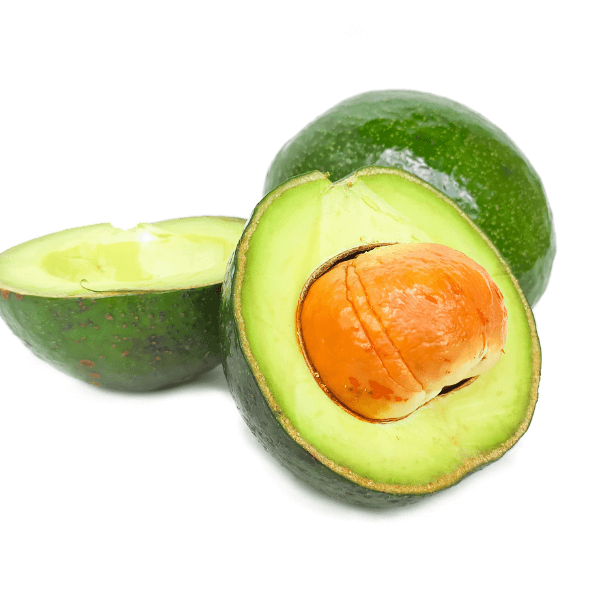
Green Avocado
Also Known As: Florida Avocado, Green Skin Avocado
Flavour: Mild and sightly nutty.
Appearance: Bright green in colour, the skin of this Caribbean fruit remains green and smooth as it ripens.
Nutrition: Good source of fibre and vitamins C, K, and E.
At the Store: Look for a slightly soft avocado that yields to gentle pressure.
How To Enjoy: As you would any other avocado! The firm flesh of the green avocado allows it to stand up well to cubing and slicing—perfect for salads.
How To Store: Keep green avocados at room temperature until ripe, then refrigerate.
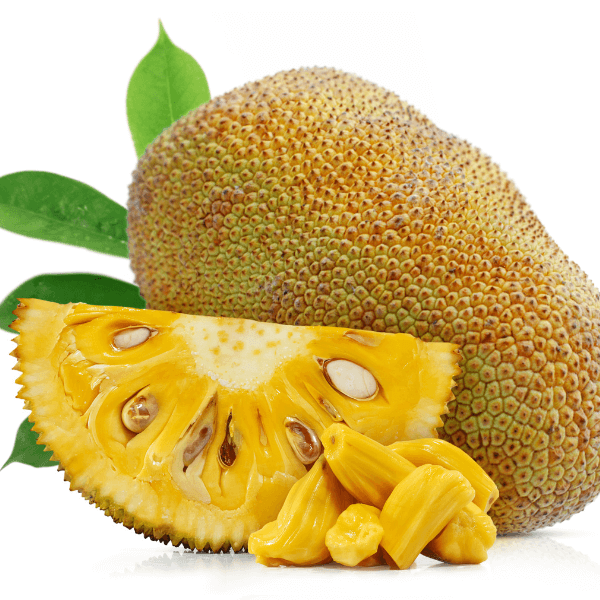
Jackfruit
Also Known As: Jakfruit
Flavour: Yellow jackfruit has a subtly sweet flavour, with notes of banana and mango, while green jackfruit is more neutral in taste.
Appearance: The largest tree fruit in the world, jackfruit has a bumpy exterior in shades of green or yellow.
Nutrition: Source of protein, potassium, magnesium, and manganese.
At the Store: Ripe jackfruit should feel heavy for its size and sound hollow when knocked.
How To Enjoy: Try jackfruit as a pulled pork alternative with your favourite barbecue sauce!
How to Store: Whole jackfruit should always be kept at room temperature, while cut jackfruit should be refrigerated. However, colder temperatures can alter the jackfruit’s texture.
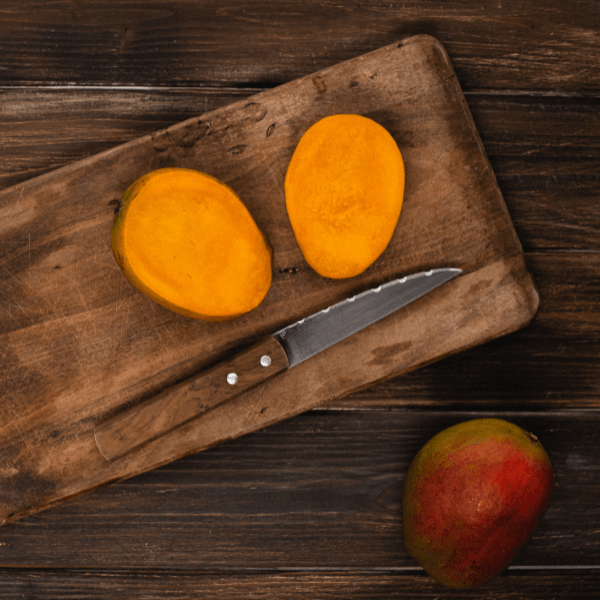
Julie Mango
Also Known As: Saint Julian
Flavour: Very sweet and juicy, with a hint of coconut.
Appearance: Smaller than average mangoes, Julie mangos are green with hues of red.
Nutrition: Source of vitamins C, A, and B6.
At the Store: This Caribbean fruit should have a blush of red with flesh that gives slightly under pressure.
How To Enjoy: As a snack, in salads, or alongside grilled meat and fish.
How to Store: Store unripe Julie mangos at room temperature and refrigerate once ripe.
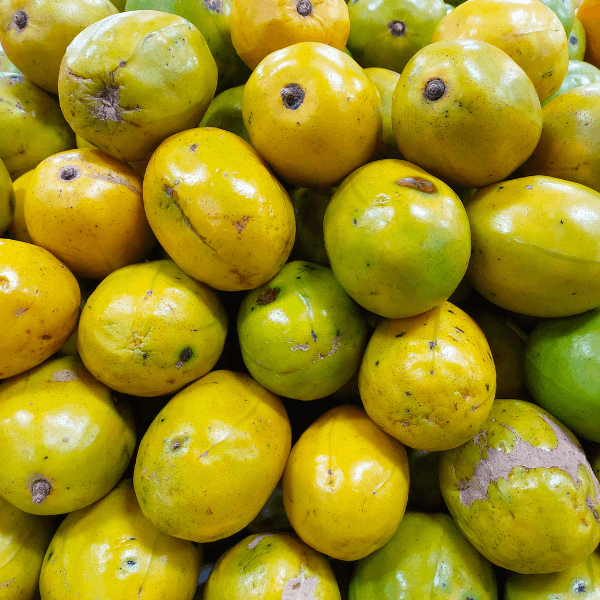
June Plum
Also Known As: Golden Apple, Jewish Plum, Tahitian Plum, Oso Berry, Ambarella
Flavour: Sweet and sour.
Appearance: A medium-sized Caribbean stone fruit, June plums have a tough skin that changes from green to yellow.
Nutrition: Good source of vitamins A and C.
At the Store: Enjoy June plums ripe (yellow) or unripe (green). Look for a firm texture and a skin that’s free of scars.
How To Enjoy: In salads, cooked in jams, jellies, and sauces, or boiled in soups, stews, and curries.
How to Store: Allow June plums to ripen at room temperature, going from green to yellow, then place in the fridge.
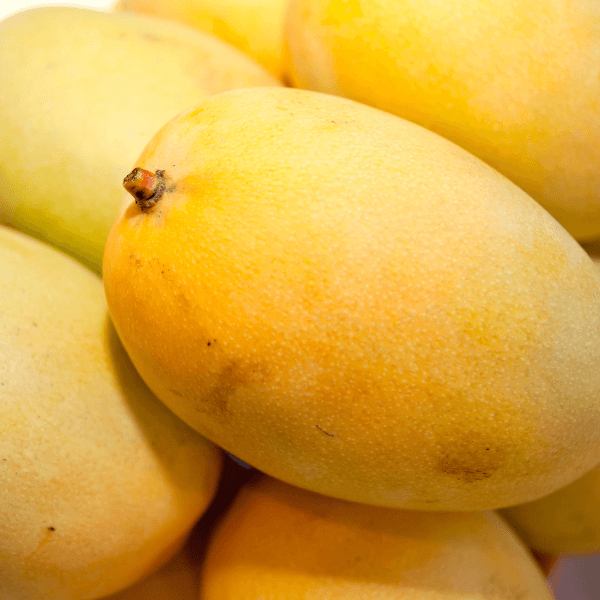
Mingolo Mango
Also Known As: N/A
Flavour: Very sweet and tropical.
Appearance: Medium-sized, this mango is a golden yellow colour.
Nutrition: Rich in fibre and vitamins A, B, and C.
At the Store: Look for skin that is a deep golden colour and yields to slight pressure.
How To Enjoy: As a snack or sliced in salads and sandwiches for a burst of freshness.
How to Store: Ripen this Caribbean fruit at room temperature and refrigerate once ripe.
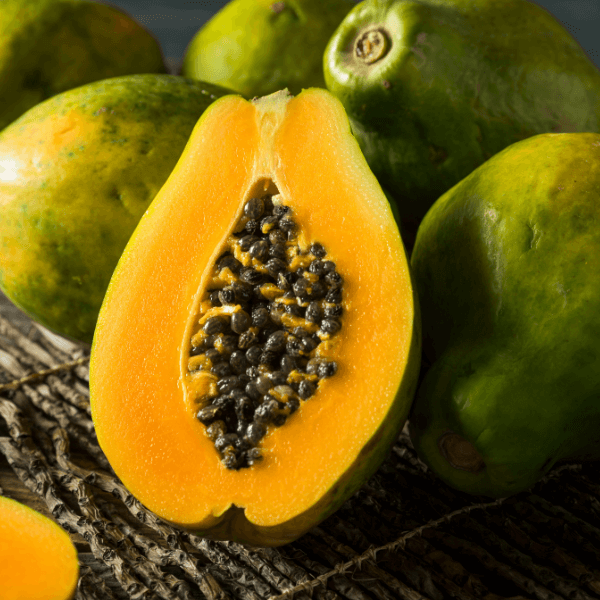
Papaya
Also Known As: Pawpaw, Tree Melon, Caribbean Red Papaya, Caribbean Sunrise Papaya, Red Papaya
Flavour: Juicy and sweet, similar to a cantaloupe.
Appearance: Large and cylindrical with green to golden skin and orange-pink flesh.
Nutrition: Very high in vitamin C, folacin, and potassium.
At the Store: Look for a papaya with no soft spots or bruises. For a ripe, ready-to-eat papaya, choose one with tinges of gold or orange. For a less ripe papaya, go for the green!
How To Enjoy: Cut this Caribbean fruit in half lengthwise and scoop out the seeds. Use this fruit in salads, salsas, smoothies, juices, and more!
How to Store: Enjoy ripe papaya immediately. Keep unripe papaya at room temperature and refrigerate when cut.
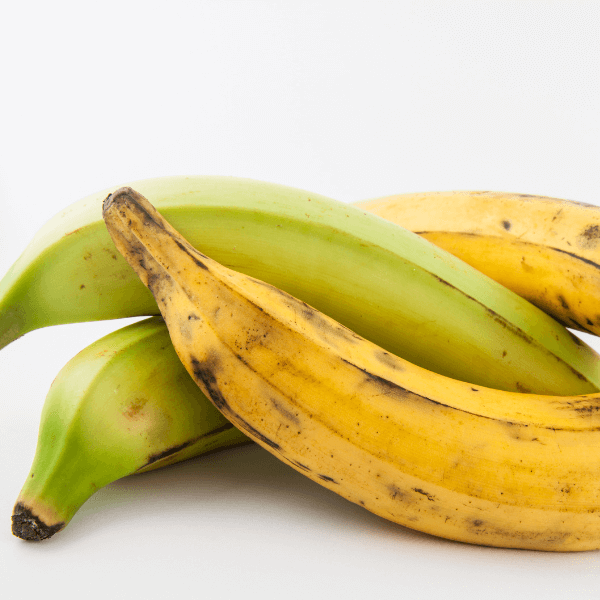
Plantain
Also Known As: N/A
Flavour: Green plantains are hard and starchy, similar to potatoes. Yellow and black plantains are sweeter and closer to a banana.
Appearance: The same species as bananas, plantains vary in colour, from green to yellow to black.
Nutrition: High in potassium and vitamins B and C.
At the Store: A ripe plantain is mostly black with a bit of yellow and is still firm to the touch when squeezed.
How To Enjoy: Plantains are best cooked, especially green ones. Try them mashed, grilled, fried into chips, or baked. They pair well with pork, beans, chicken, and seafood.
How to Store: Keep plantains at room temperature. Do not refrigerate them. Do not stack them to prevent bruising.
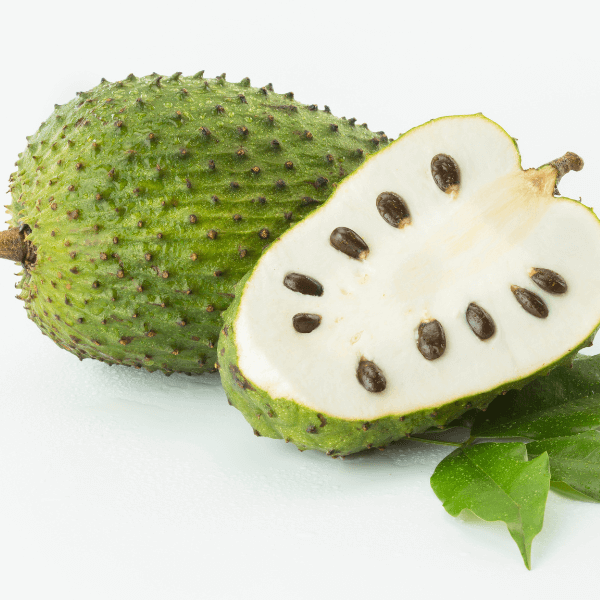
Soursop
Also Known As: Graviola, Guyabano, Guanabana, Sirsak, Brazilian Pawpaw
Flavour: Sweet, slightly sour, and musky, with notes of banana, strawberry, coconut, mango, and pineapple.
Appearance: A medium-to-large sized Caribbean fruit, soursop has a bumpy, spiky exterior that ranges in colour from dark green to yellow-green.
Nutrition: High in fibre and vitamin C and source of magnesium, iron, and potassium.
At the Store: Select a soursop that gives to slight pressure.
How To Enjoy: Cut the soursop in half and discard the seeds. Scoop out the flesh with a spoon and use in juices, salads, smoothies, and desserts.
How to Store: Keep whole soursops at room temperature until ripe. Ripe soursop will keep for 2-3 days in the fridge.
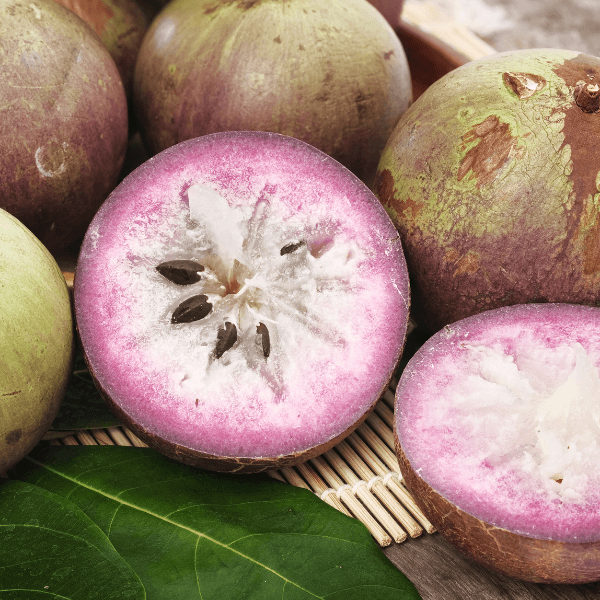
Star Apple
Also Known As: Caimito, Cainito, Tar Apple
Flavour: Mild, sweet, and delicate, similar to lychee or persimmon.
Appearance: The size of a large apple, star apples have a thin, glossy skin in shades of red-purple or dark purple with hints of green.
Nutrition: Good source of calcium, phosphorous, and vitamin C.
At the Store: Look for star apples that are slightly wrinkled, but not bruised or with broken skin.
How To Enjoy: As a snack or in salads, desserts, and beverages. Discard the seeds, skin, and rind as they aren’t edible.
How To Store: Ripen star apples at room temperature before transferring to the fridge.
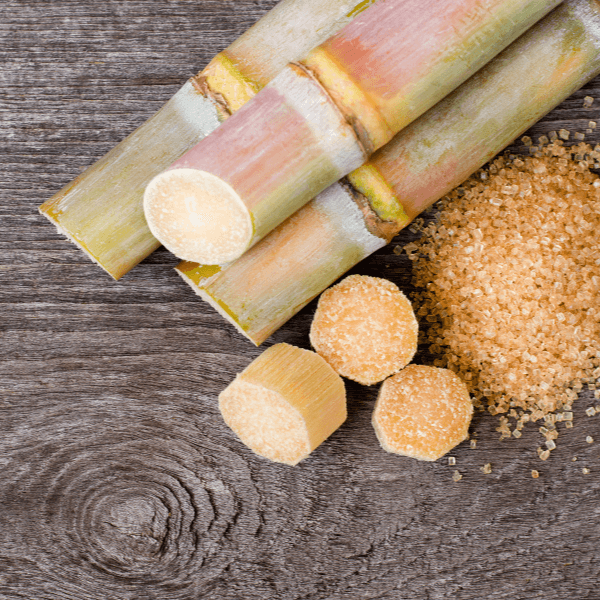
Sugar Cane
Also Known As: N/A
Flavour: Sweet and starchy with a vanilla flavour.
Appearance: Tall green or golden stalks similar to bamboo.
Nutrition: Rich in calcium, magnesium, potassium, fibre, and vitamins.
At the Store: Look for golden stalks that are firm.
How To Enjoy: Peel your sugar cane before eating. Sugar cane is usually chewed as a snack to enjoy the sweet juice, and the fibrous flesh is discarded.
How To Store: Keep sugar cane in the fridge.
Caribbean Vegetables
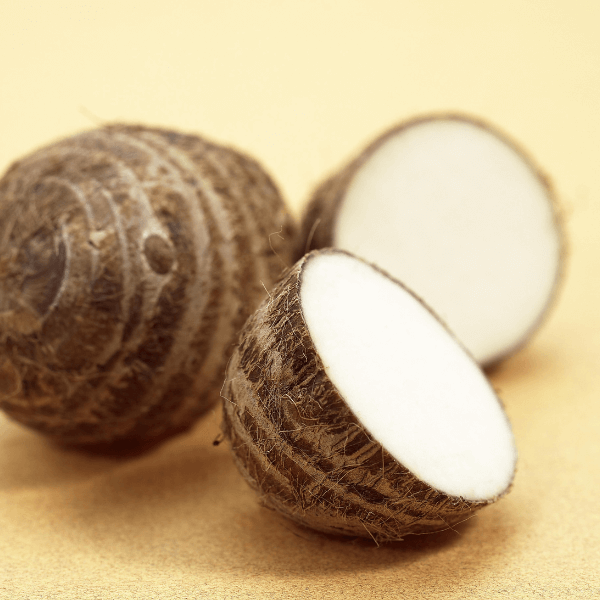
Dasheen
Also Known As: Taro, Coco
Flavour: Mild and nutty.
Appearance: An oval-shaped tuber with a hairy brown skin and white flesh.
Nutrition: High in vitamin C.
At the Store: Look for dasheens with unblemished skin.
How To Enjoy: For safe consumption, dasheen must be boiled. You can then mash or puree it into soups, smoothies, or burgers. Dasheen is often used as a substitute for potatoes.
How To Store: Store this Caribbean vegetable in a cool, dry place for a few days.
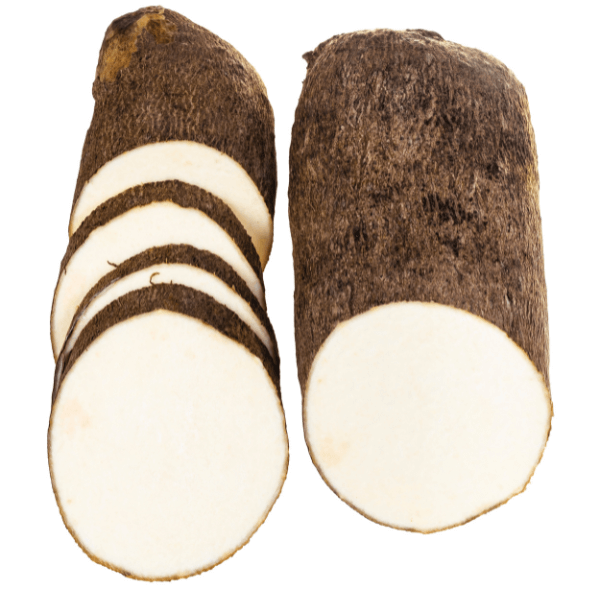
Negro Yam
Also Known As: Black Yam
Flavour: Earthy and mildly sweet.
Appearance: Ovoid, with a brown or black hard skin.
Nutrition: Source of protein, fibre, calcium, potassium, and vitamin C.
At the Store: Look for yams that are firm without bruises or cuts.
How To Enjoy: Cook this yam before consuming. Try it baked, fried, boiled, or mashed.
How To Store: Keep refrigerated or in a cool, dry place.
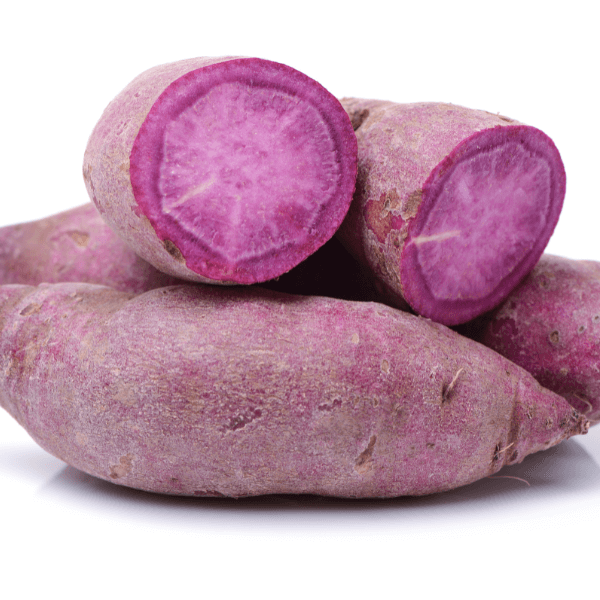
Purple Sweet Potato
Also Known As: Caribbean Yam
Flavour: Sweet and nutty.
Appearance: Dark brown to purple skin with vibrant purple flesh.
Nutrition: Rich in fibre, potassium, and vitamins A and C.
At the Store: Look for firm sweet potatoes that don’t have cuts or bruises.
How To Enjoy: Enjoy purple sweet potato boiled, baked, roasted, or steamed.
How To Store: Store purple sweet potatoes in a cool, dark place.
